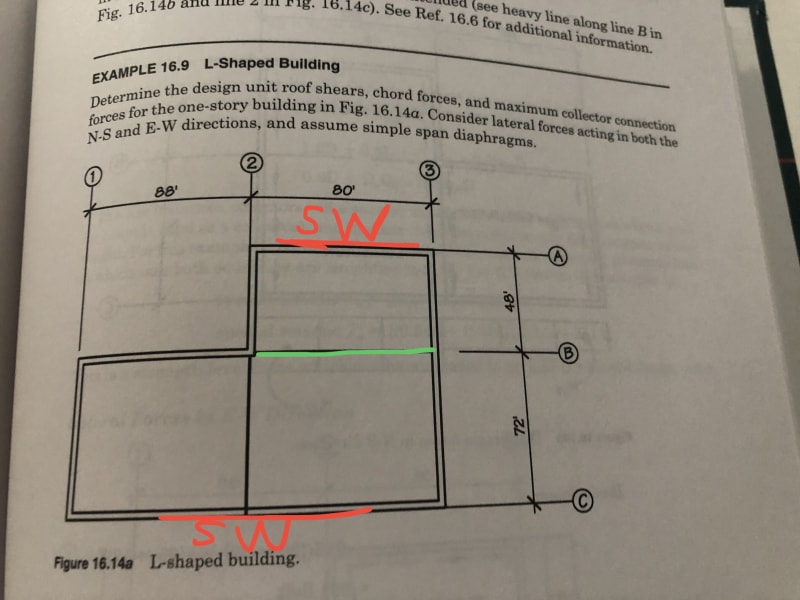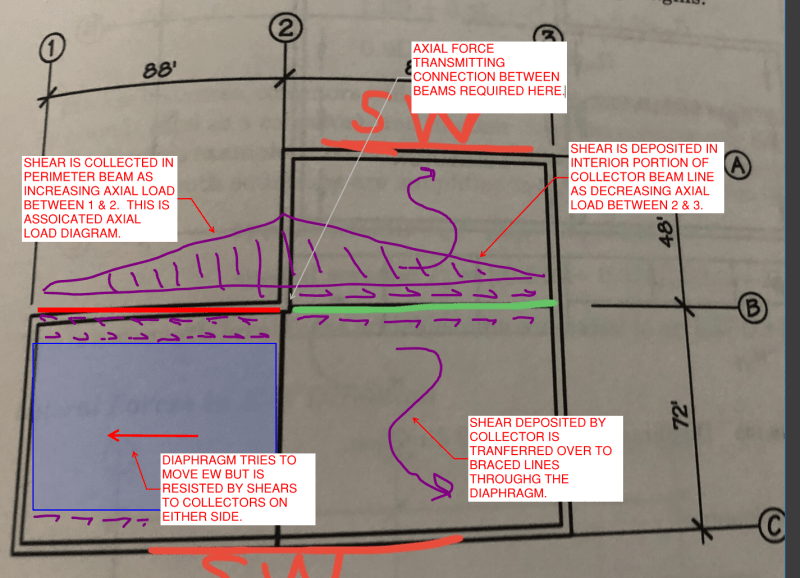1) The sketch below would have been my version of TLHS's model. I don't dispute that there are other viable stories that can be told to satisfy equilibrium. However:
a) The other stories often complicate the connection detailing of the deck and/or infill framing and;
b) The model shown below is what I see done 99% of the time in practice and in the literature.
2) As far as a definition of what constitutes a "collector" in the context of diaphragm design, I feel that it should be this:
A collector is any member that participates significantly in transmitting local diaphragm shear stresses from their points of origin to the vertical lateral force resisting systems whereby the shears exit the diaphragm.
By this definition, the green beam is a "collector" even though it's job is, technically, to deposit / distribute shear stresses rather than collect / aggregate them.
3) In many respects, I feel that it would be an improvement to define
Collector Framing Lines rather than collector members. Collector members would then then just be the components of collector framing lines that may either be in the business of collecting shear or depositing it as required by the situation.
4) In a very real way, framing line B can be envisioned as part of both framing lines A & C when it comes to the collector definition. That, because the shears collected on framing line B ultimately get transmitted over to lines A & C via the diaphragm between lines 2 & 3. The situation is much like that of an offset rebar splice in concrete design.



